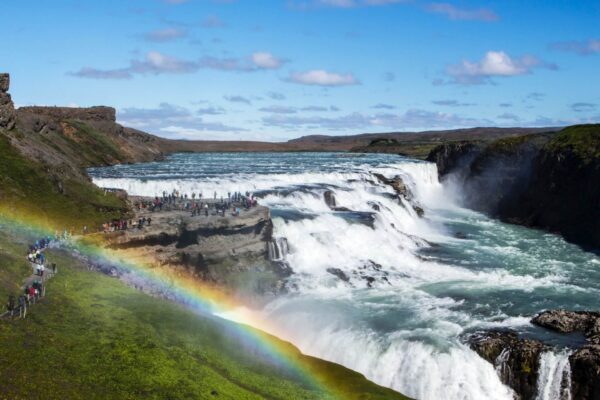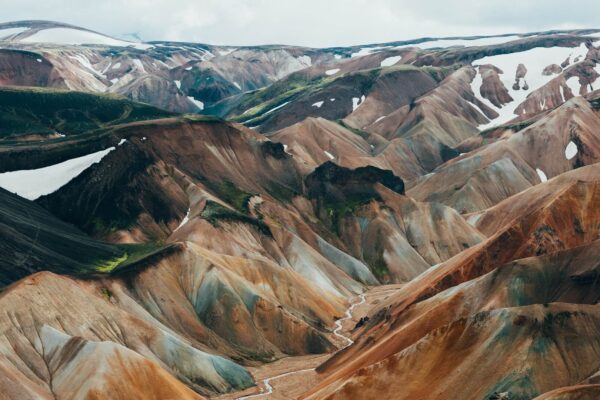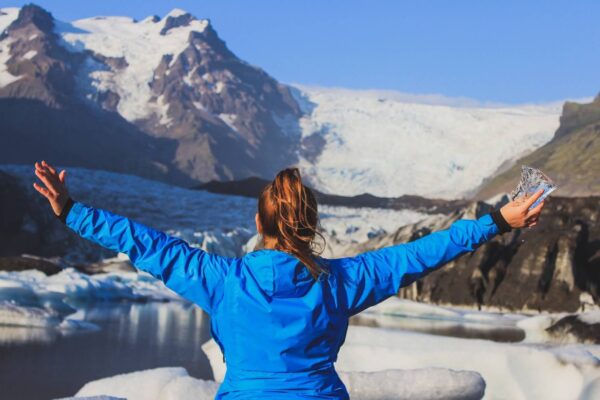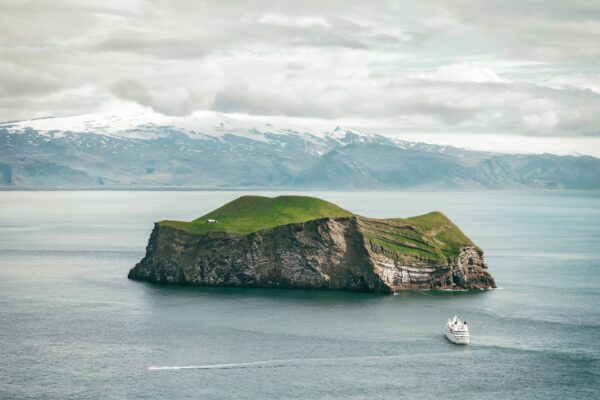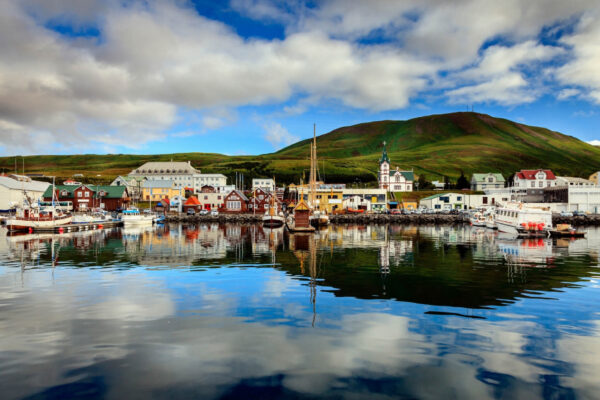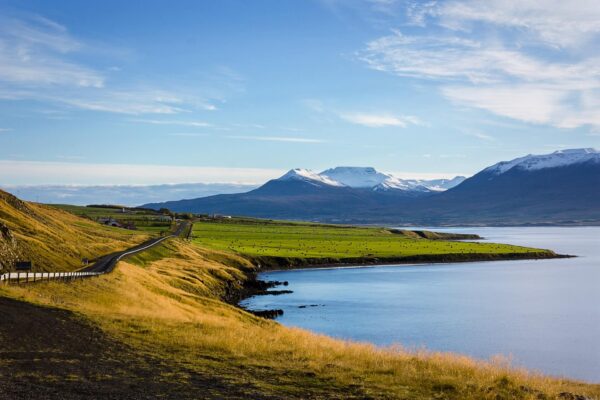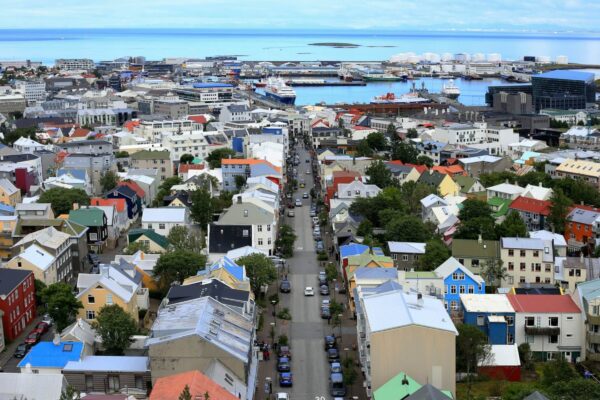Eyjafjallajökull is internationally known since its eruption in 2010, when it brought European air traffic to a temporary standstill. The volcano has since calmed down again and invites you to go on exciting exploration tours and hikes. Here you can find out everything you need to know about a trip to the famous Icelandic glacier and volcano.
What is Eyjafjallajökull?
Eyjafjallajökull is a glacier and volcanic massif in Iceland. It is the sixth largest glacier in the country and probably its best known. The ice cap of Eyjafjallajökull has an area of approximately 78 km², its altitude range is between 150 and 1652 metres – the highest peak of the glacier is Guðnasteinn. The volcano itself lies beneath the glacier and contains several smaller mountains. Its caldera has a diameter of around three to four kilometres and has several craters.
The volcano became famous around the world when it erupted for the first time since 1823 in March 2010. The erupted volcanic ash disrupted air traffic, particularly in northern and central Europe, and caused it to be cancelled in April. The eruption was taken up humorously in the French film “Eyjafjallajökull” , which was released in 2013 – in German, it had the fitting subtitle “The Unpronounceable Volcano Film”.
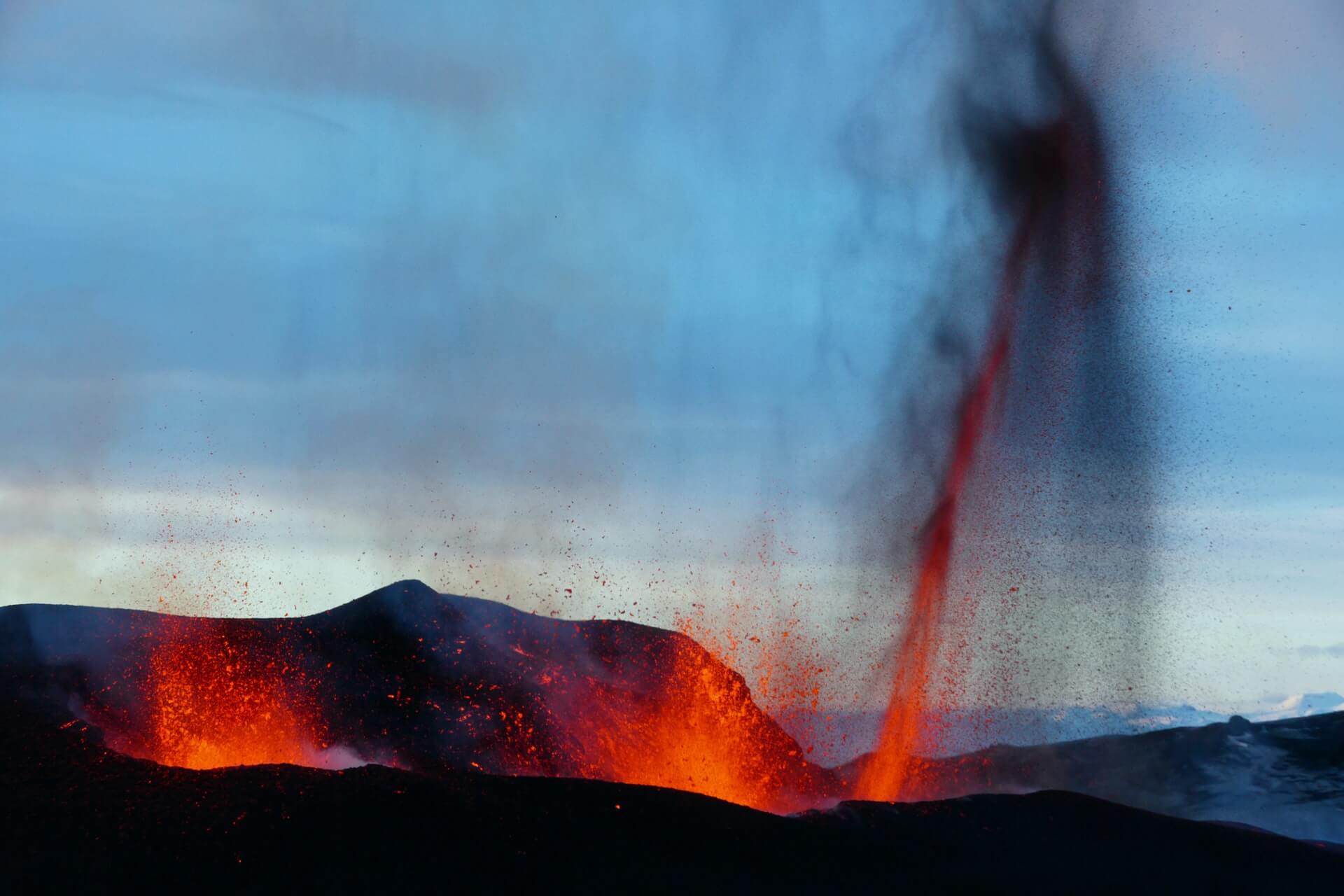
How to pronounce Eyjafjallajökull
Eyjafjallajökull is Icelandic for “Island mountains glacier”. It is pronounced “Eyja-fjatla-jökytl”.
Where is Eyjafjallajökull located in Iceland?
Eyjafjallajökull is located in the south of Iceland, not too far from the Atlantic coast. The volcano is located in the Eyjafjöll mountain range in the municipality of Rangárþing eystra. It is about 130 kilometres from the Icelandic capital Reykjavik as the crow flies. From Eyjafjallajökull you have a very good view of the Westman Islands, which lie off the south coast of Iceland.
If you are travelling through Iceland on a round trip, Eyjafjallajökull is a good place to stop between the capital and the impressive Vatnajökull National Park with its glacier.
Tours and hikes at Eyjafjallajökull
There is currently no need to worry about eruptions on Eyjafjallajökull, so tours, hikes and ascents on Eyjafjallajökull are safe. The eruption site from 2010 can also be visited, but only in good and clear weather conditions. There are also several guided tours, which are not only interesting for inexperienced hikers. In the small town of Hvolsvöllur there is a visitor centre about the volcano, which also focuses on the 2010 eruption and its consequences.
The easiest and most popular way to climb to the crater is via the Fimmvörðuháls trail and can be done in one or two days. This tour starts depending on where you are staying, but usually in Skógur or in the valley ofÞórsmörk. The hike first leads to the Útivist refuge, which is located at an altitude of around 1050 metres, and from there it takes around three hours to reach the craters Magni and Móði. In total, the hike is around 14 kilometres long.
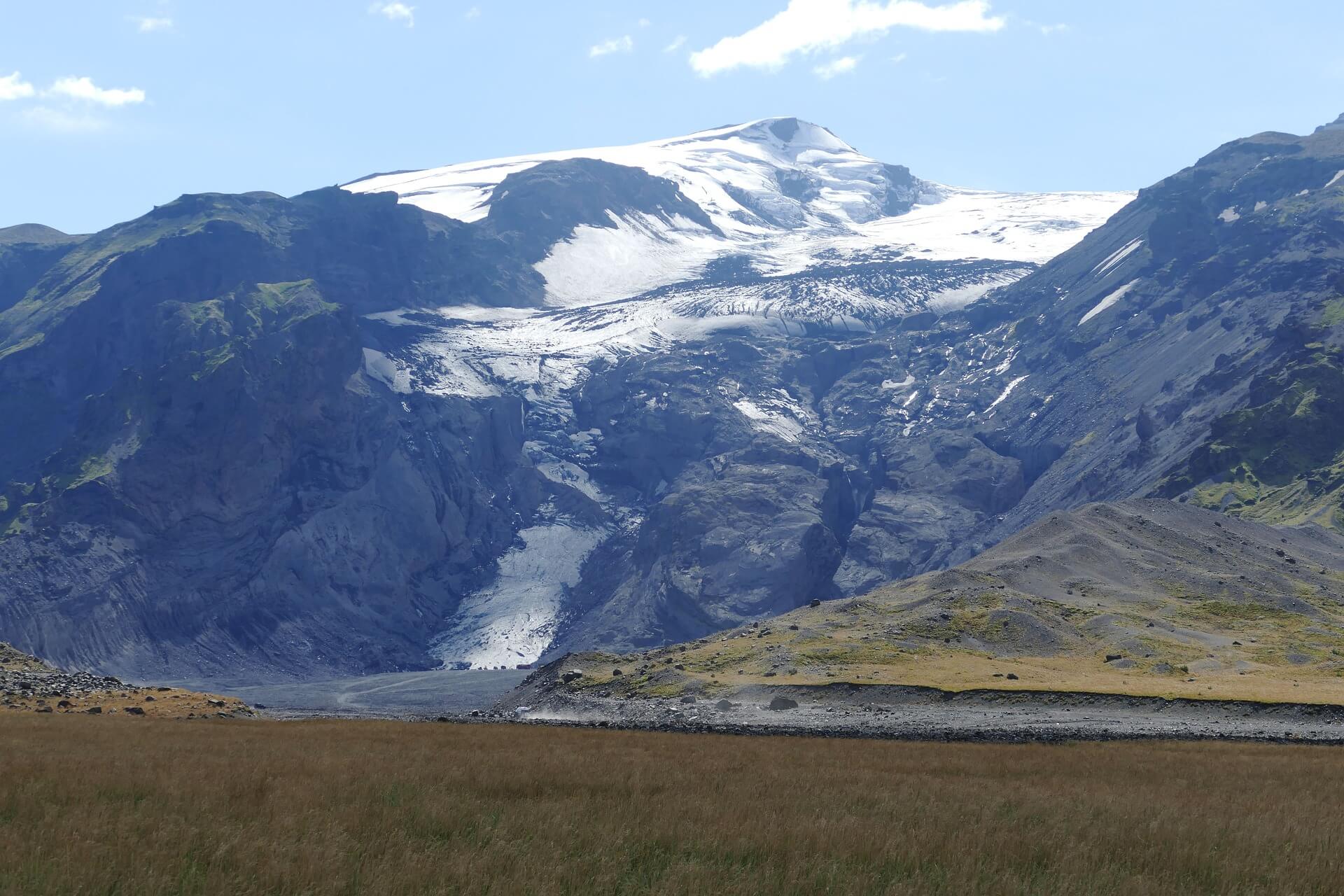
Attractions at Eyjafjallajökull
Skógafoss
Skógafoss is an impressive waterfall located around 12 kilometres south of Eyjafjallajökull near the Atlantic coast. It is 60 metres high and 25 metres wide. Due to its sheer width and mass of water, you can often see one or two rainbows, which gives the waterfall a charm all of its own.
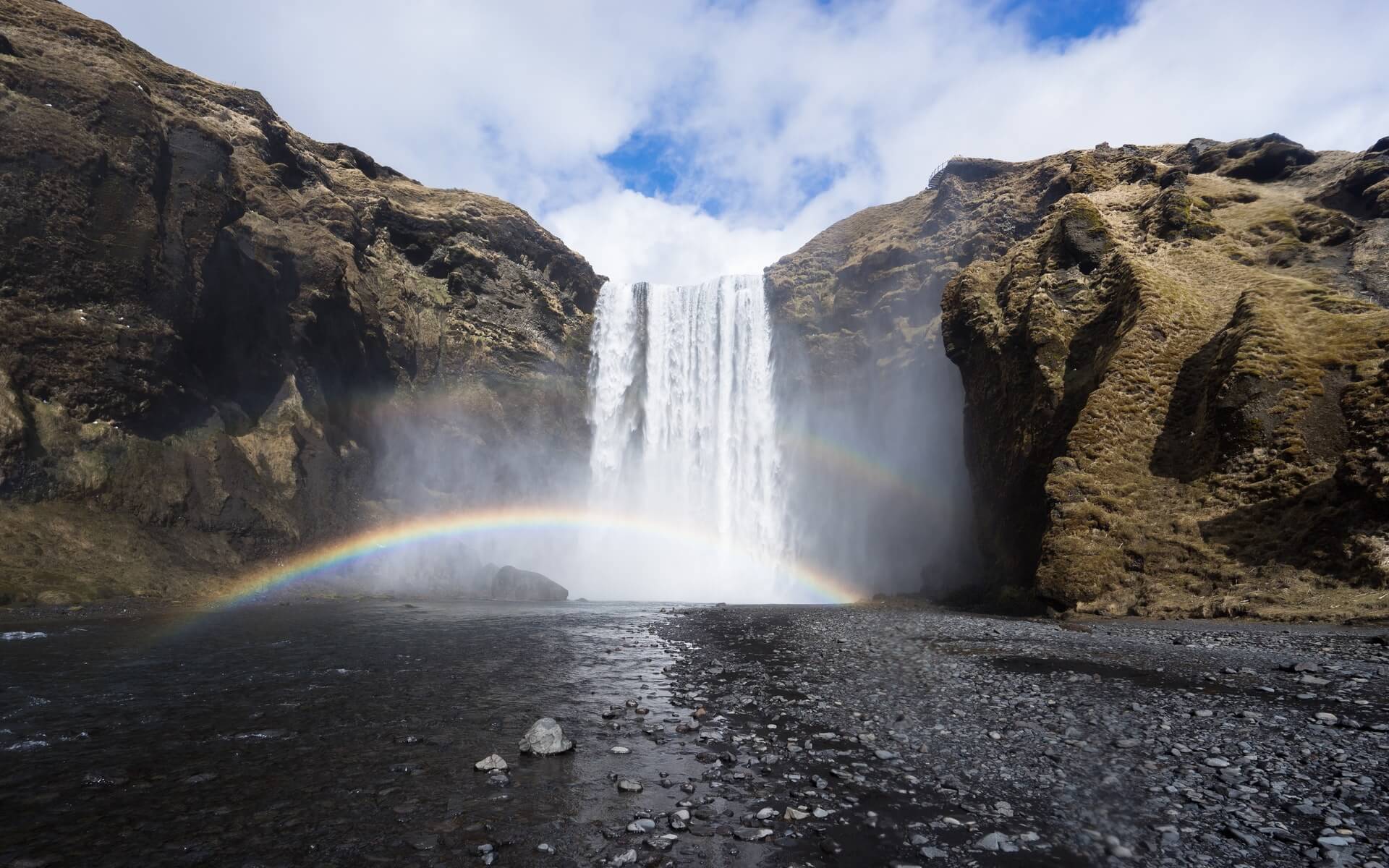
Þórsmörk
Þórsmörk is a mountain ridge and valley between various rivers and glaciers north of Eyjafjallajökull. Translated, its name means “Forest of Thor” – and its name says it all, as the ridge is home to a dense, rugged forest. The nature reserve is particularly popular with hikers, as there are countless paths and trails to explore the valley and the surrounding gorges, waterfalls and glaciers. There are also several accommodation options here, which is also interesting for visitors to Eyjafjallajökull.
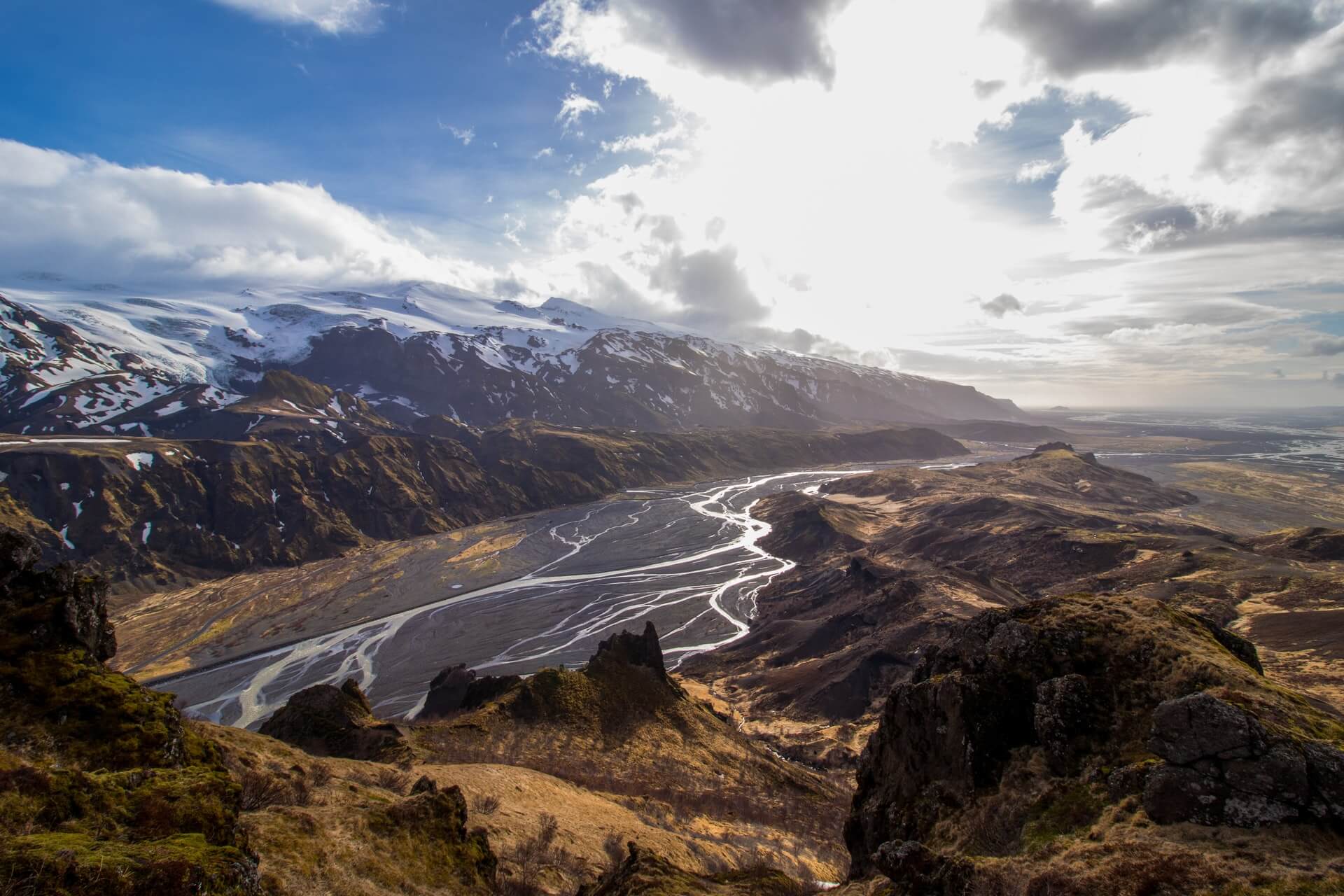
Accommodation at Eyjafjallajökull
Camping at Eyjafjallajökull
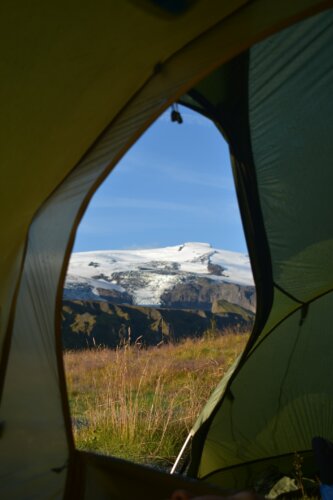
Especially in the summer months, staying at a campsite is a great option. This allows you to get to know the exciting and impressive nature of Iceland even better and closer, as many campsites are located directly in the countryside.
In addition, many campsites now offer not only independence for holidaymakers, but also a range of services and different types of accommodation. You can find everything you should not forget for a trip to Iceland on our Iceland packing list.
Whether you’re travelling with a tent or camper van, you can find accommodation at campsites – many also make a good starting point for tours. There are campsites near Eyjafjallajökull, for example atÞórsmörk or in the village of Skógar.
Hotels and holiday homes in the vicinity of Eyjafjallajökull
There are several guesthouses and hotels in the villages and areas around Eyjafjallajökull, for example on the former farm Hellishólar, which is now a small holiday village.
Alternatively, you can also stay overnight in Reykjavik and make excursions from there to the various sights in Iceland, such as Eyjafjallajökull.
Travelling to Eyjafjallajökull
Although there are also ferries and cruises to Iceland, the easiest and quickest option is still to travel by plane. Eurowings, for example, offers direct flights to Reykjavik. Once there, it is a good idea to organise a hire car if you are not taking part in a booked tour or round trip. Eyjafjallajökull is around 2 1/2 hours’ drive from the Icelandic capital.
